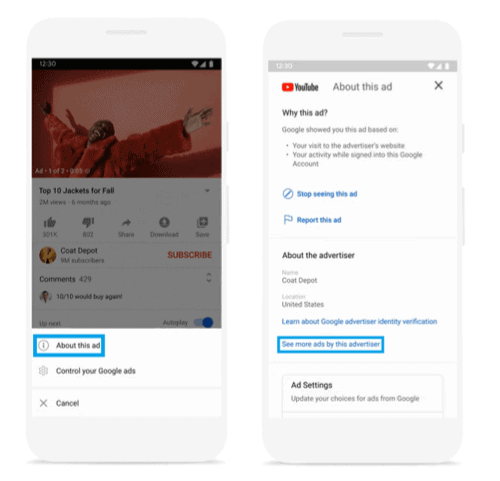PPC trends can be exhausting to keep up with. There are so many changes to platforms, technology, and overall best practices that there are always new marketing trends rolling out. Some are designed to be “fast hacks” to get results, which aren’t worth the effort, but sometimes the trends are a significant indication of where things are moving in the future. All the more reason advertisers offering Google Ads PPC services should stay updated on the latest industry trends.
This time of year it’s always a great idea for advertisers to take a look at existing PPC updates and trends and assess how their campaigns will be impacted as a result. You want to take stock of these trends and what they can mean for the future so you can start preparing now.
1. Automation With Oversight
There are so many native automation features rolling out across different ad platforms, and there are also third-party automation tools that can help streamline different parts of PPC ad management. These automation features are either rolling out, getting expanded access, or gaining new features.
A few examples include:
Automation can be exceptionally useful for brands or advertisers that are busy and who are working at scale; when you’ve got set rules in place for different trigger-based actions to occur, it’s easier to make sure nothing is missed.

Many advertisers, as a result, are spending more by taking full advantage of automation, going all in one automated rules and machine-learned optimization for everything from targeting to bidding and placements.
Automation can be a tool, but it’s going to be important to still keep a close eye on your campaigns so you can jump in and take the wheel as needed no matter how advanced the automation becomes.
How to Prepare for 2022
Here’s how you can prepare for leveraging automation for your campaigns without fully setting your campaigns on unsupervised auto-pilot:
- Determine which automation rules are helpful. We’re big fans of using rules to send an email, pause a campaign, or change other campaign factors based on hyper-specific criteria, for example. Testing Smart Shopping campaigns can also be effective, and Responsive Display Ads can help drive results.
- Know that some automation features need data before they can do their job well. Smart Shopping campaigns are a perfect example. We recommend that you give it at least a few weeks of using regular Shopping campaigns with success before running Smart ads to ensure that there’s enough data for Google to leverage automated optimization correctly.
- Never be fully hands-off. Even with specific criteria set up and plenty of data to go off, the reality is that no automation is ever 100% perfect. It’s important to still monitor your campaigns closely so you can jump in the second something doesn’t quite look right, and before you lose a solid chunk of ad spend.
2. Increased Use of Customer Match Retargeting
Google’s Customer Match retargeting is a great feature in Google that allows brands to reach out to a group of specific individuals. You can pull data from your CRM and connect it with Google so you can target new leads who haven’t yet converted, for example, or customers who purchased once a few months ago but haven’t purchased again yet.
Most platforms have similar features, with the majority of paid social platforms calling them something like “Custom Audiences.”

List-based retargeting may be more valuable than ever now that iOS 14.5 has arrived and sent campaign tracking and automated retargeting based on online behavior into a tiny bit of a tailspin. (The iOS 14.5 update, for those who may have missed it, automatically opts users out of tracking and requires them to opt-in; many, as you may have guessed, have chosen not to for many tools.)
As a result, list-based retargeting is a sure-fire way to reach individual users without relying on potentially-faulty tracking tools. Since privacy is only going to continue to be important across all platforms, there will likely be more additions like iOS 14.5 instead of fewer.
How to Prepare for 2022
The two biggest things you can do to prepare for a successful year in 2022 are:
- Get your lists ready to go and uploaded. You can do this manually or use third-party tools like Zapier to sync up the data on a regular and automated basis for you.
- Get your campaigns srategized. Think about what customer lists you want to use, and what campaigns you want to use to reach out to them. Having a clear strategy in place for retargeting can increase the effectiveness of your campaigns.
3. More Investments Into Responsive Display
We’ve already mentioned Responsive Display Ads and for good reason: They’re dead useful, and it’s no surprise that brands and advertisers are investing more into the platform.
This is for a number of reasons:
- Responsive Display Ads can be part of Smart Shopping campaigns, but both features use some degree of machine learning and automation already to get advertisers the best results
- They can be exceptionally useful at scale
- More automation is happening, and Google announced changes in mid-September of 2021 that means the quality of this feature has increased substantially, including roll outs of automation bidding and the ability to pay only for the conversions your ad actually drives
How to Prepare for 2022
Set up your campaigns now if you haven’t already so they’re ready to go for 2022 and beyond. You can see everything you need to know about setting up Responsive campaigns here.
4. Clean Up Your Keyword Lists
In September of this year, Google announced that the broad match keyword option has improved and that there are new rules for prioritizing keywords.
Simply put, Google can now better understand the intent and context of search queries from users, and that’s being applied to keyword matching for both the broad match and phrase match options.
Now, broad match and phrase match keywords that are identical to a search query will be prioritized in place of an exact match keyword. And if you have multiple match types for a keyword that are relevant to a search query but not an identical exact match, Google will decide based on relevance and Ad Rank.
As a result, some advertisers are starting to do keyword list cleanups to make sure their relevance is on point.
How to Prepare for 2022
Take a look at all of your ad groups and the keywords on them. Is every keyword relevant to the intent of what users are searching for? If not, it may be time to cut it loose if it isn’t a particularly high-performer bringing in substantial results for your campaign.
It also may be a good idea to take advantage of Smart bidding to help attract more qualified leads. Test this feature out to see if this can work for you.
5. Prepare for the Fade Out of Expanded Text Ads
In August, Google announced that expanded text ads (ETA) will no longer be supported by June of 2022. They’ve largely been replaced by Responsive Search Ads (RSAs).
Good and bad news here: You definitely won’t be able to create new ETAs after June of 2022, but you can run existing ETAs indefinitely. You can’t edit these ads, but you can pause and remove them as needed.
How to Prepare for 2022
You want to get your ETAs squared away as soon as possible so that you have time to test and edit as needed before June rolls around.
This means you need to create and test the ever living daylights out of your ETAs. Test them, whittle them down to your best possible campaigns. Account for seasonal trends (including prospective holiday ads in the future) and have everything locked and loaded. Remember that you can have campaigns paused. In general, evergreen ETAs for your brand and most valuable products and services are going to be the way to go here.
You’re also going to want to start learning more about RSAs and testing those, too. Start creating, testing, and optimizing RSAs so that you’ll be able to create new campaigns when the time comes and new needs arise.
6. Be Mindful of Transparency Required by “About This Ad”
In September of this year, Google shared that users can see “About This Ad” pages for Display, Video, and Shopping ad placements.
If you’ve ever seen the small boxes that say “Why Am I Seeing This Ad,” this is essentially a full, scaled out version.
In a focus on both privacy and quality assurance, users are now able to see data of “About This Ad” in multiple placements to see exactly why they were chosen to see the ad; this may be because they were added to a list, or based on certain criteria.
On this page, they’ll also be able to see what other ads the brand has posted within the last 30 days.

How to Prepare for 2022
This isn’t going to majorly impact advertisers, and Facebook has already had a similar feature with their Ad Library for several years.
There may be several things to consider here though.
The first is that you want to ensure that your offers are relatively consistent outside of minor split tests, and that you’re presenting a “united front” so to speak. If one user converts on a $10 off ad but sees that someone else gets $20 off and it’s not just for first-time customers, they may be irritated and getting in touch with customer service. This is unlikely to be a significant factor, but it’s something to be aware of.
And the second: If you see an ad from a competitor, take a peek at this page. You can see the ads that they’re running quickly and easily, which you can use to your advantage by one-upping them.
7. Adding New Attributes to Google Shopping Listings
Last on our list, we’ve got a few new Google Shopping product feed attributes that can be added to product listings.
Product attributes are snippets of information that tell both Google and users about your product, which are uploaded through your product feeds to create detailed listings. You can add attributes like color, new vs used, size, and more.
There are new attributes for Shopping listings, which include the following:
- “Get it by Dec 24” tags that can be used to push sales before the holidays as long as the user orders promptly
- Return policy annotations like “free 90-day returns”
- Attributes for veteran-owned and women-owned attributes
These all offer potentially valuable information to users depending on how they’re shopping. Some customers prefer to support veteran-owned or women-owned brands, and having this attribute can put you in a smaller pool of competition where customers are more likely to purchase. Similarly, the other new attributes can help to attract new sales.
How to Prepare for 2022
Take a look at the new attributes and see if there are any that you can use to your advantage. If there are, update your product feed promptly. See how to do this here.
Final Thoughts
As we’re wrapping up 2021 and getting started in 2022, it’s important to keep an eye on PPC trends and updates that will influence how we shape our campaigns (and how users will interact with them). These are 7 of the most significant and impactful PPC trends and updates right now, so make sure that you’re fully prepared to adapt.
Want help getting your campaigns optimized like never before? Get in touch with us and see how we can help you!



